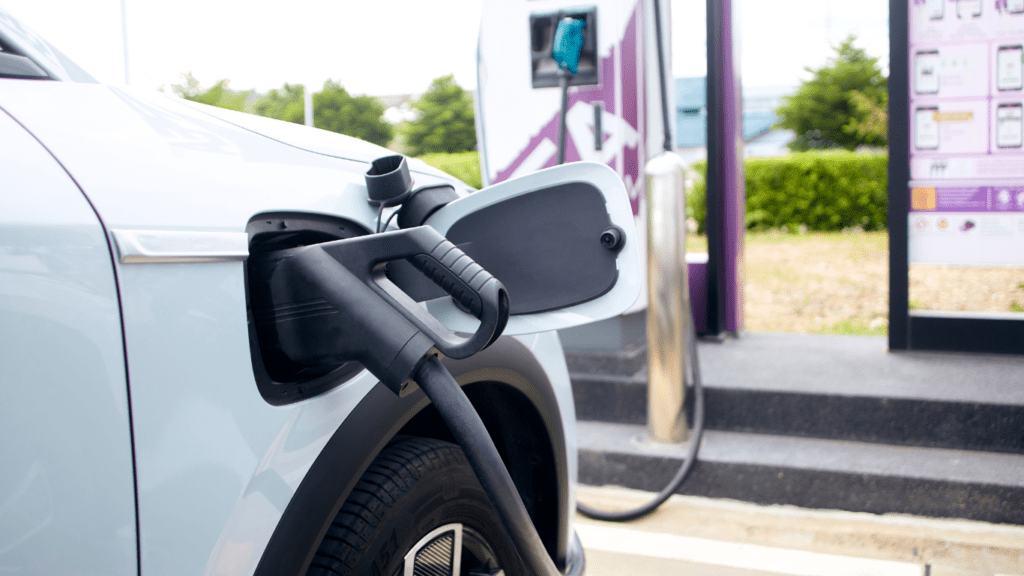Overview of Wireless Charging for EVs
Wireless charging for EVs offers unparalleled convenience. This technology streamlines charging by removing the need for manual plug-ins.
What is Wireless Charging?
Wireless charging, also known as inductive charging, transfers energy between two objects through an electromagnetic field. For EVs, this involves a charging pad on the ground and a receiving coil on the vehicle’s underside. When the vehicle is parked over the pad, the system initiates charging automatically. This technology eliminates the need for physical connectors, making it user-friendly.
How Wireless Charging Works
- Wireless charging operates on the principle of electromagnetic induction.
- The primary coil in the charging pad generates an alternating electromagnetic field when energized.
- This field induces current in the secondary coil located on the EV’s underside.
- The power is then converted to charge the vehicle’s battery.
- Efficiency depends on alignment and distance between the coils, with optimal positioning ensuring maximum energy transfer.
- Enhancements include dynamic wireless charging, allowing vehicles to charge while in motion, further increasing convenience.
Benefits of Wireless Charging for EVs
Wireless charging for electric vehicles (EVs) provides numerous advantages, from user convenience to enhanced safety. This section explores the key benefits of this technology.
Convenience and Ease of Use
Wireless charging simplifies the process of powering EVs. Automatic charging starts when the car is parked over a charging pad, eliminating the need for manual plugging. Users save time and effort, especially beneficial in adverse weather or for individuals with limited mobility. This ease of use directly addresses common frustrations associated with traditional charging methods.
Efficiency and Speed
Wireless charging technology has evolved to offer high efficiency, with many systems achieving over 90% transfer efficiency when coils are optimally aligned. This high efficiency ensures that EVs can charge quickly without significant energy loss. As the technology advances, the time required to charge EVs wirelessly is expected to reduce further, making it competitive with fast-charging wired solutions.
Safety and Reliability
Wireless charging enhances safety by eliminating physical connectors, reducing the risk of electric shocks and wear and tear on cables. The system’s design ensures it operates effectively in various weather conditions, like rain or snow. Moreover, advanced safety features, such as automatic foreign object detection, prevent the system from activating if an obstruction is present, ensuring reliable and secure charging.
Current Technologies and Solutions
Wireless charging for EVs leverages advanced technology to enhance user convenience and efficiency. This section dives into the prevalent technologies in this space.
Inductive Charging
Inductive charging, the cornerstone of wireless EV charging, involves transferring energy through electromagnetic fields. A typical setup includes a ground pad with a primary coil and a secondary coil on the vehicle’s underside. When aligned, the primary coil generates an alternating electromagnetic field that induces current in the secondary coil, powering the vehicle’s battery. This method boasts over 90% energy transfer efficiency, making it a viable alternative to conventional plug-in charging.
Resonant Inductive Coupling
Resonant inductive coupling builds on traditional inductive charging by improving energy transfer over greater distances. This system uses coils tuned to resonate at specific frequencies, enabling efficient power transfer even when the coils are not perfectly aligned. This feature enhances flexibility in positioning the vehicle and maintains high efficiency. Additionally, resonant inductive coupling supports dynamic wireless charging, allowing EVs to charge while moving, further revolutionizing the convenience of electric vehicle use.
Comparison with Traditional Charging Methods

Wireless charging offers several advantages over traditional plug-in charging, providing increased convenience and efficiency for EV users. Let’s dive into specific aspects to understand how these methods compare.
Cost Implications
Initial setup costs for wireless charging can be higher than traditional methods. Installing wireless charging infrastructure involves placing charging pads and ensuring proper vehicle alignment, which can increase expenses. However, over time, wireless systems may reduce maintenance costs since there’s no physical wear and tear on cables or connectors.
In contrast, plug-in stations typically have lower installation costs but involve ongoing maintenance and potential replacement of cables and connectors due to wear. Additionally, as wireless technology evolves and becomes more widespread, costs are expected to decrease, making it a more viable long-term solution.
Deployment and Infrastructure
Deploying wireless charging infrastructure involves integrating charging pads into:
- parking spaces at homes
- workplaces
- public areas
This setup can be more complex than traditional plug-in stations, requiring precise placement and alignment for optimal energy transfer. Plug-in charging stations, on the other hand, are often simpler to install and can be deployed in a variety of locations with easier adjustments.
However, they necessitate users to manually connect and disconnect their vehicles, which can be less convenient, especially in adverse weather conditions or for those with limited mobility. As the demand for EVs grows, optimizing charging infrastructure to maximize user convenience and efficiency becomes increasingly critical.
Challenges and Considerations
While wireless charging for EVs offers numerous conveniences, several challenges and considerations must be addressed for successful implementation.
Technological Limitations
Wireless charging technology faces specific constraints in efficiency and alignment. Current systems achieve over 90% efficiency, but slight misalignments between the vehicle and charging pad can reduce performance. For optimal energy transfer, precise positioning is necessary, and advanced alignment systems may add to the overall cost.
There’s also the issue of energy loss due to the air gap between the coils. Despite advancements in resonant inductive coupling, achieving reliable charging at various distances remains a challenge, particularly for dynamic charging scenarios where vehicles charge while moving. Additionally, electromagnetic interference with other devices needs careful management to ensure safe and efficient operation.
Market Adoption
The adoption of wireless charging infrastructure requires substantial investment. Initial deployment costs are higher compared to traditional plug-in stations, primarily due to the need for precise installation and advanced technology.
There’s also the matter of standardization; different manufacturers may use varying specifications, complicating widespread adoption. As more EV owners consider wireless charging, manufacturers and infrastructure providers must collaborate on establishing common standards. Furthermore, consumer awareness and confidence play critical roles.
Since wireless charging is relatively new, educating potential users about its benefits and overcoming any skepticism are essential for market penetration. Public infrastructure, such as charging pads in parking lots and streets, needs extensive planning and investment to match the convenience and reliability of plug-in stations.
Future Prospects
Wireless charging for EVs promises a transformative shift in how we fuel our electric vehicles. This technology is poised for significant advancements and widespread adoption.
Innovations in Wireless Charging
Emerging technologies could redefine wireless charging for EVs. One promising development involves dynamic charging, where vehicles charge while in motion. Companies like Qualcomm and WiTricity are exploring this technology, which could eliminate range anxiety and ensure continuous operation for EVs.
Additionally, improvements in resonant inductive coupling are increasing the efficiency and flexibility of wireless charging systems. Specialized coils tuned to specific frequencies enable effective energy transfer even with some misalignment, enhancing practicality in everyday use. Research on materials like gallium nitride (GaN) could further elevate efficiency and reduce system size, making integration easier for manufacturers.
Potential Market Growth
The market for wireless EV charging could see substantial expansion. According to Allied Market Research, the global market for wireless EV charging systems is projected to reach $1.48 billion by 2027, growing at a 36.4% CAGR from 2020. Increased EV adoption, supported by government incentives and a shift toward sustainable transportation, drives this growth.
Auto manufacturers are also investing in wireless charging solutions, with brands like BMW and Mercedes-Benz introducing compatible systems in their models. Collaboration between automakers and tech companies can accelerate infrastructure development, making wireless charging an industry standard. These enhancements will play a crucial role in how we power our vehicles in the future.




